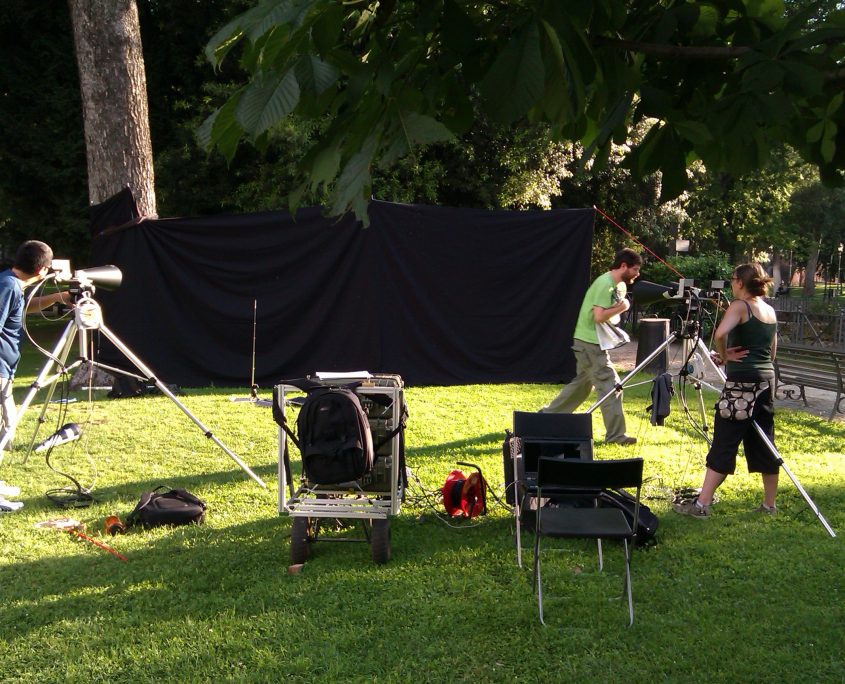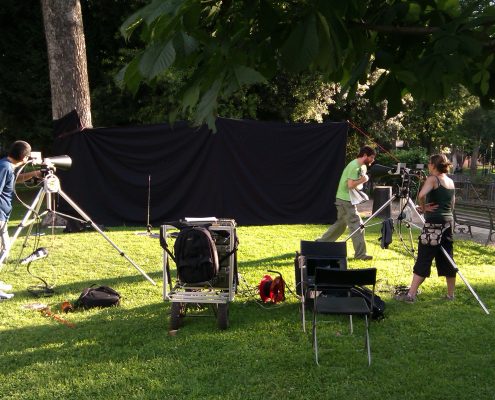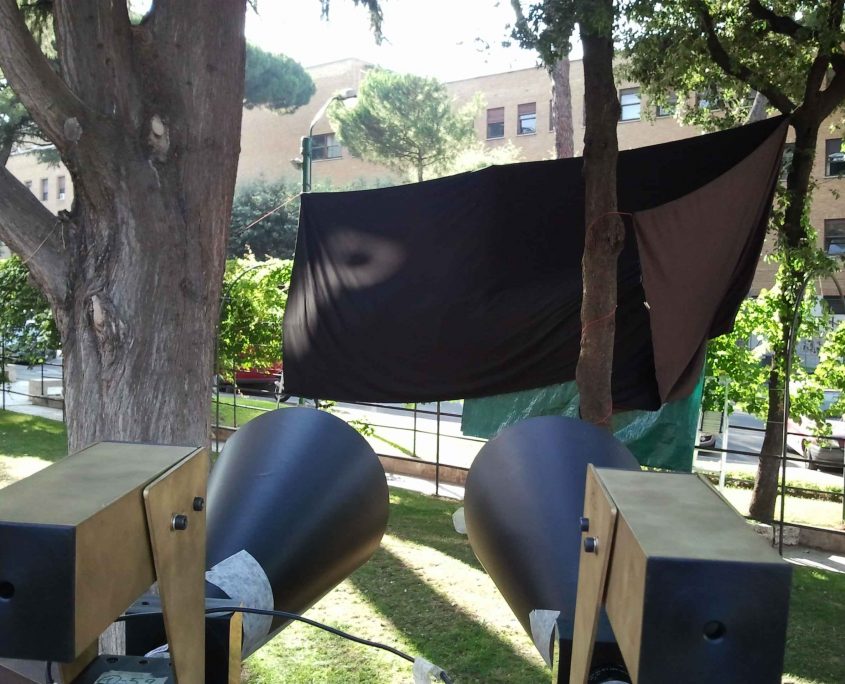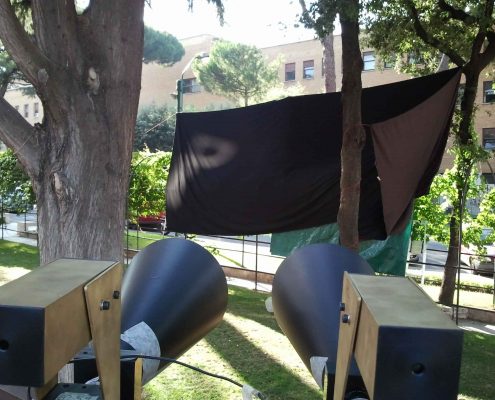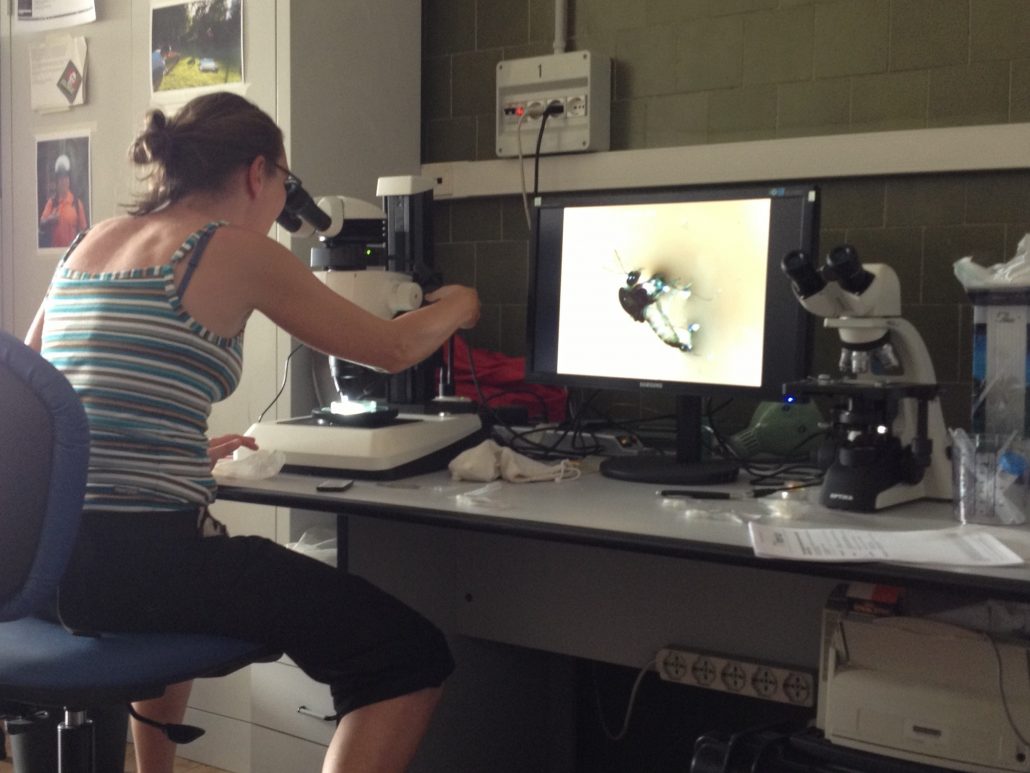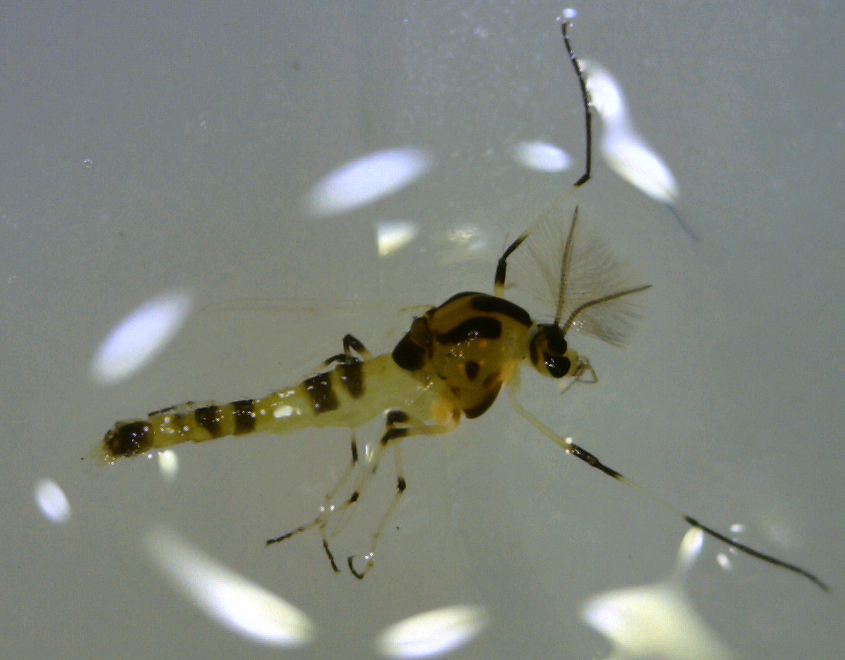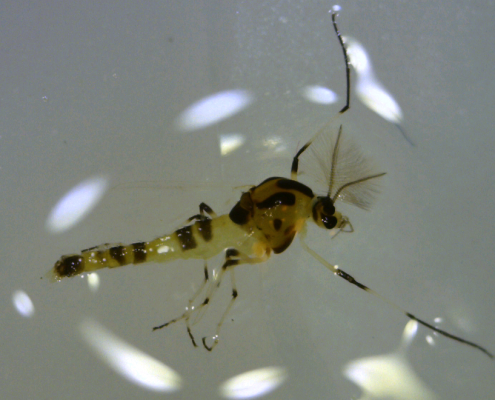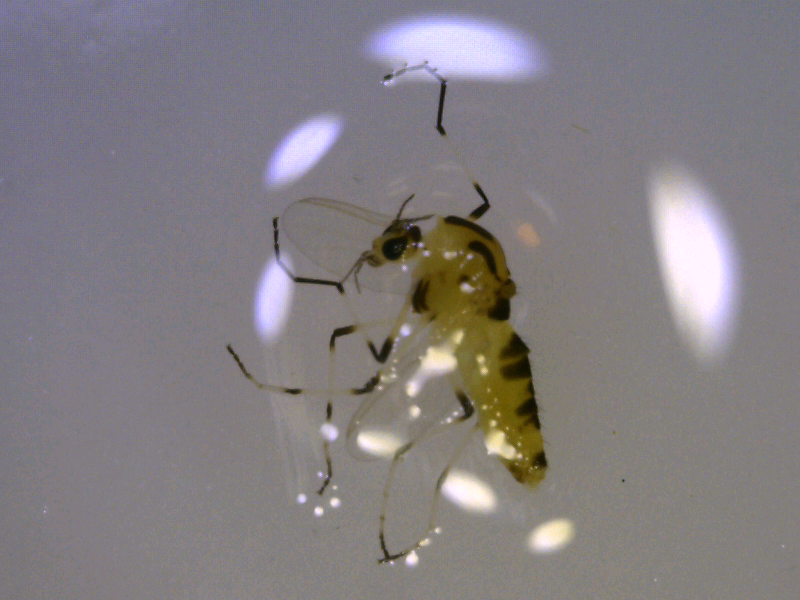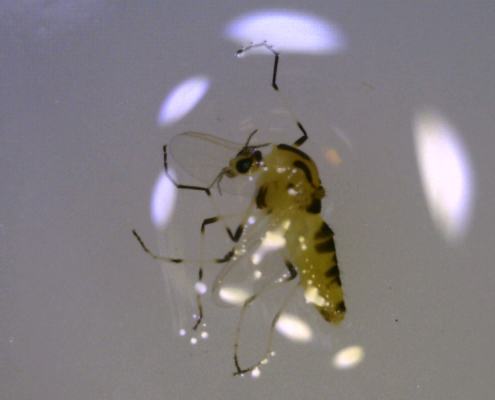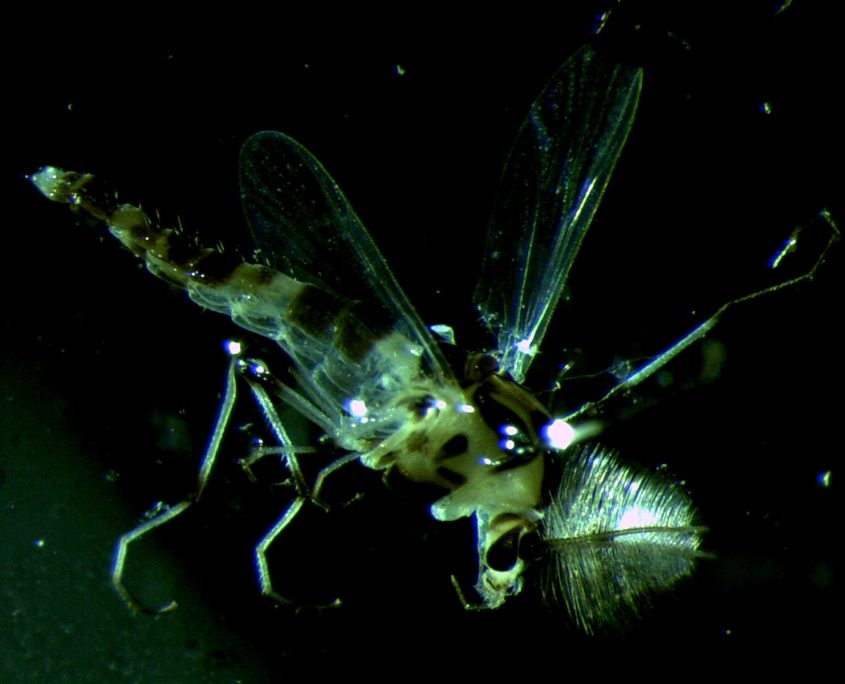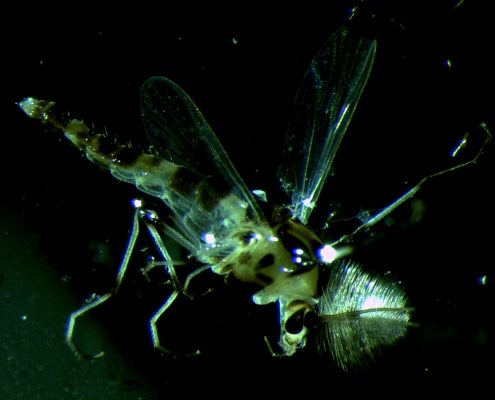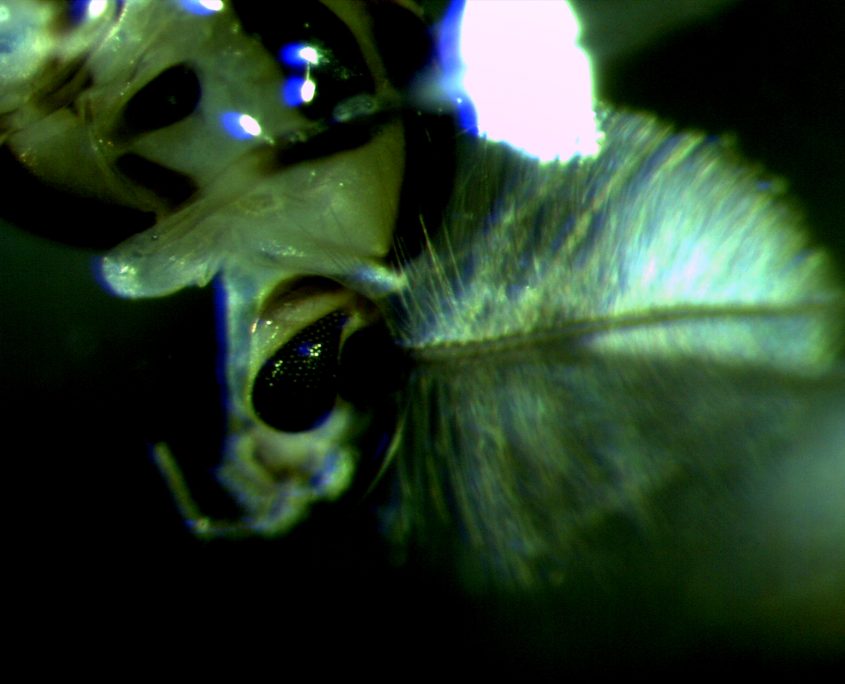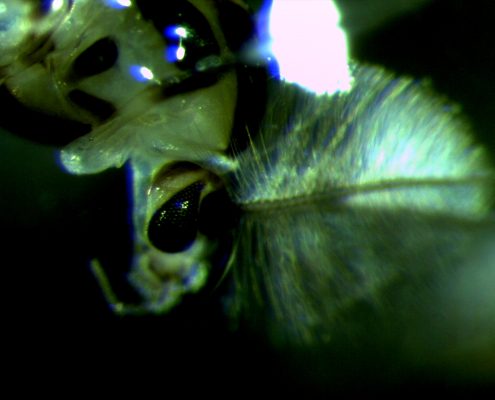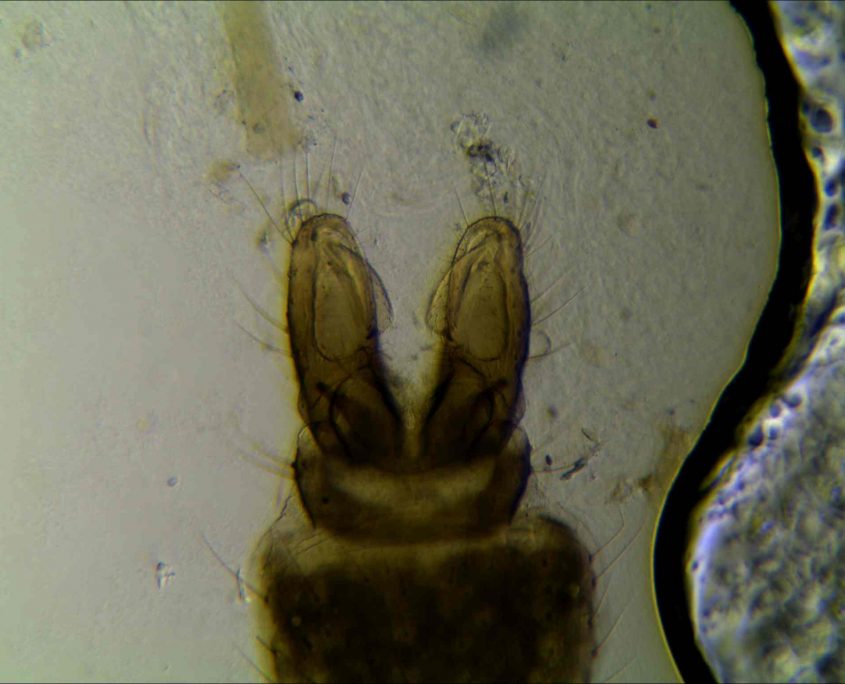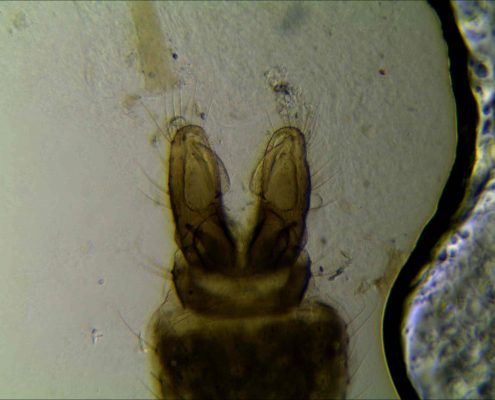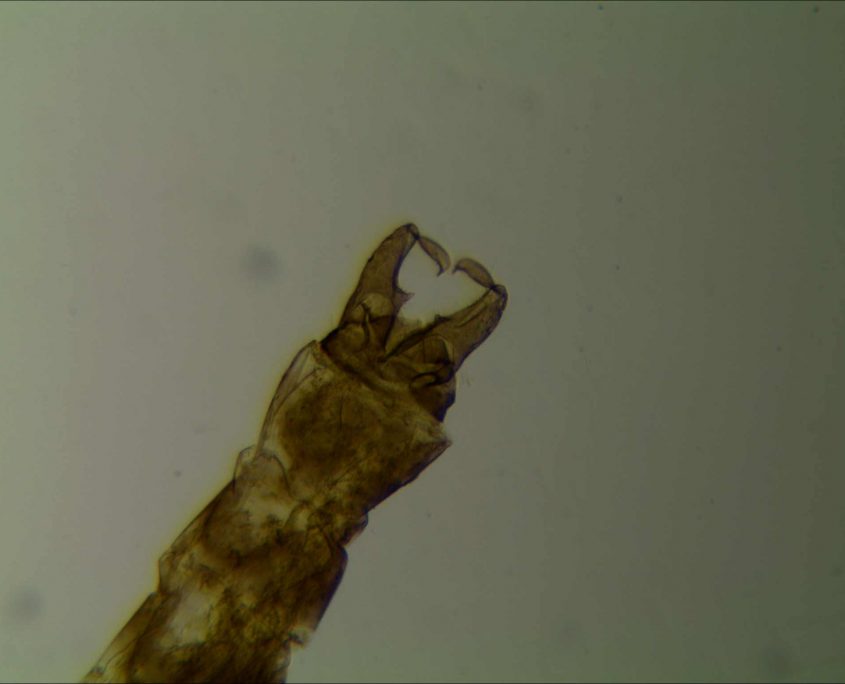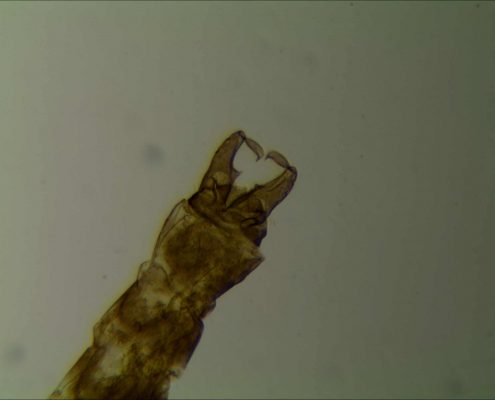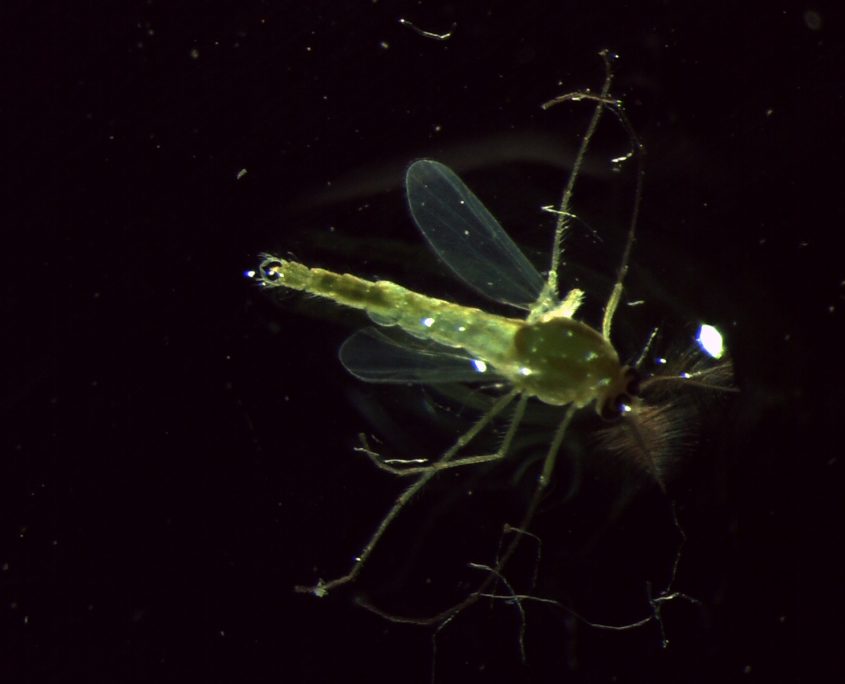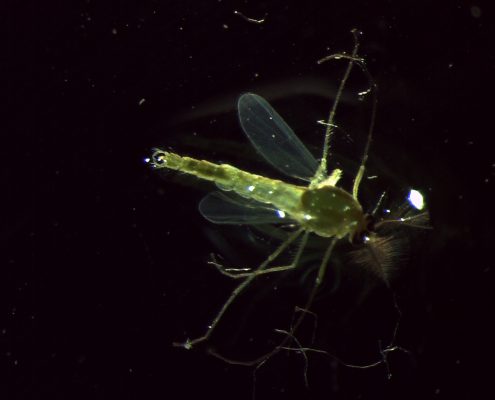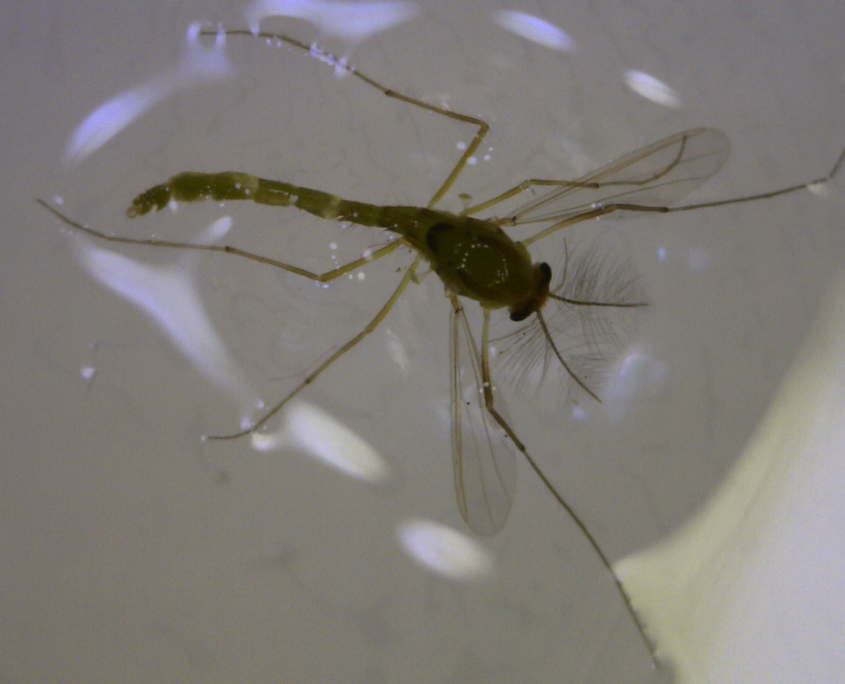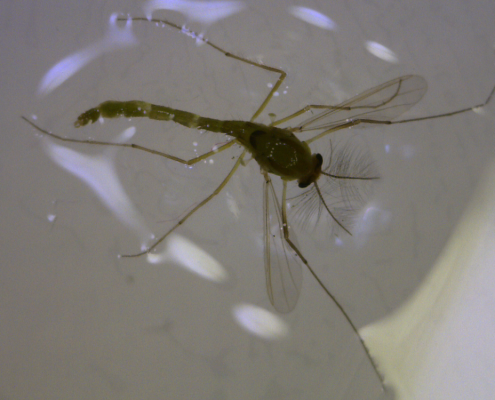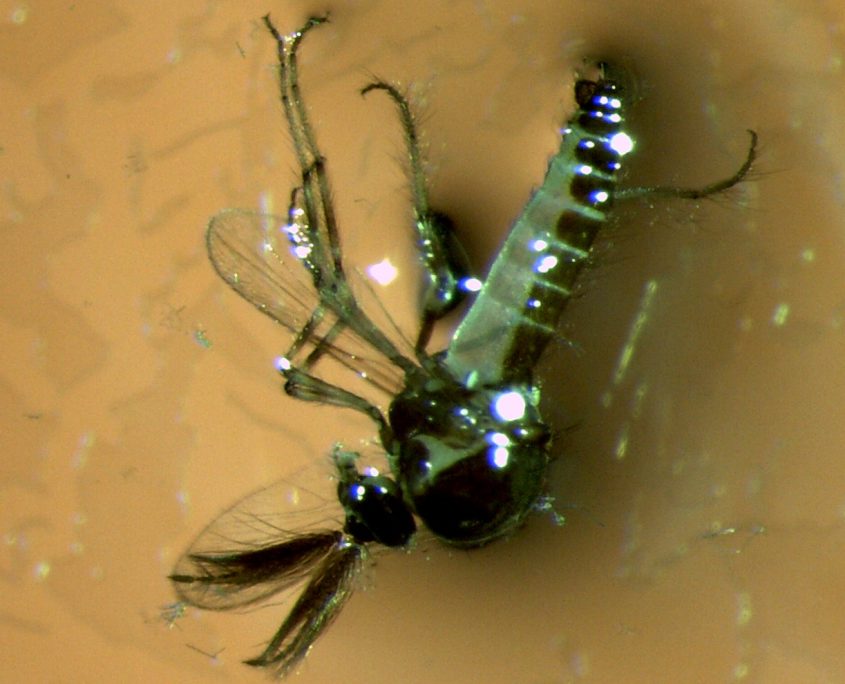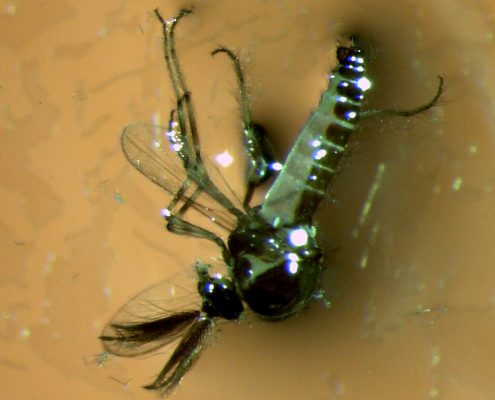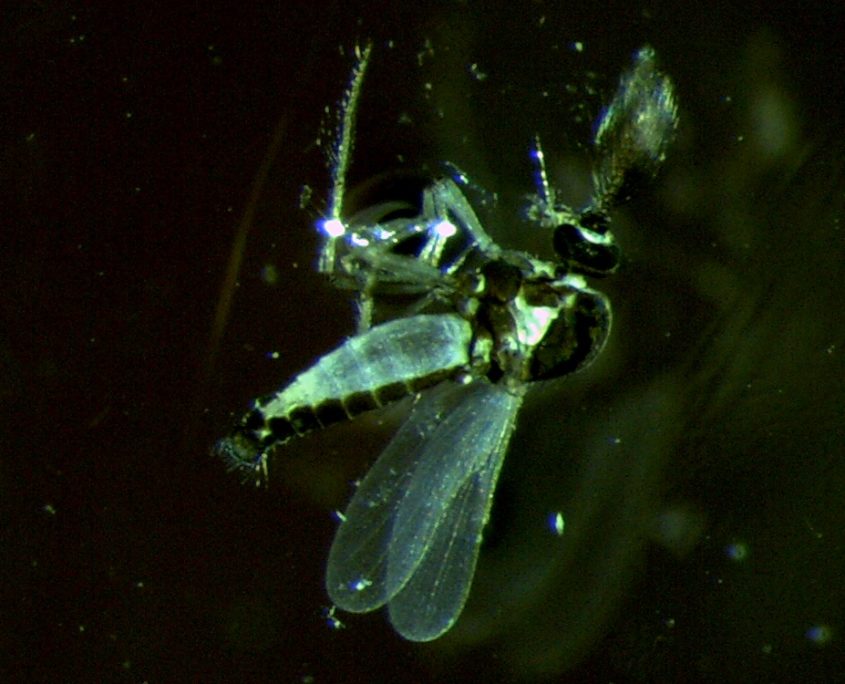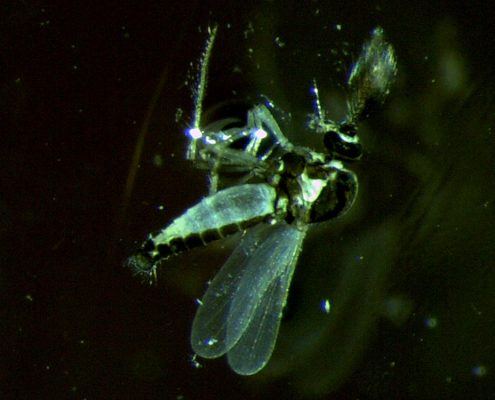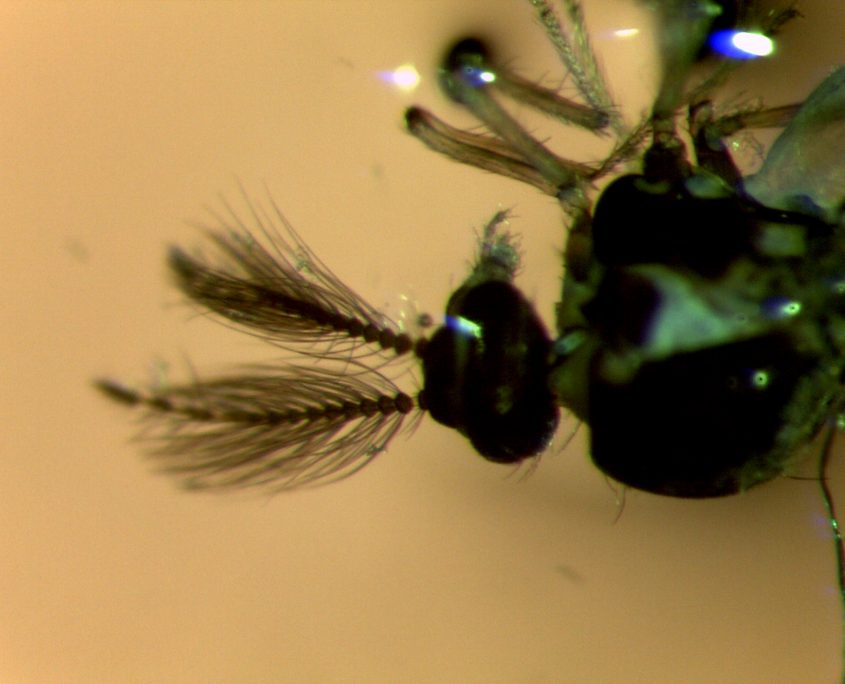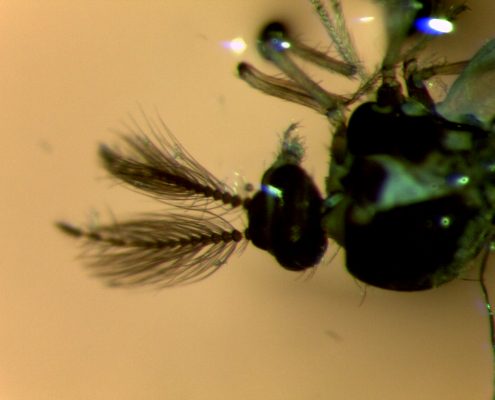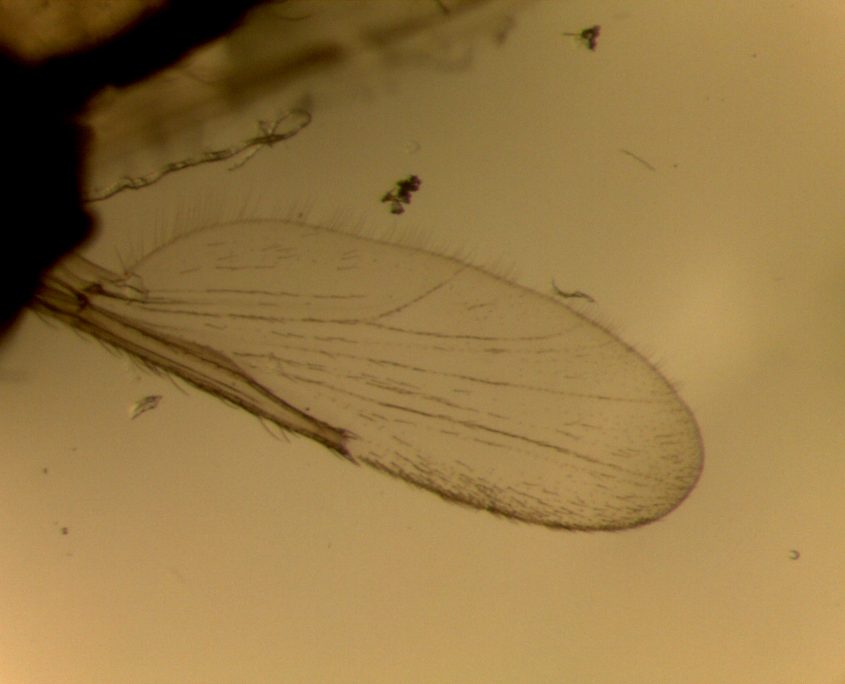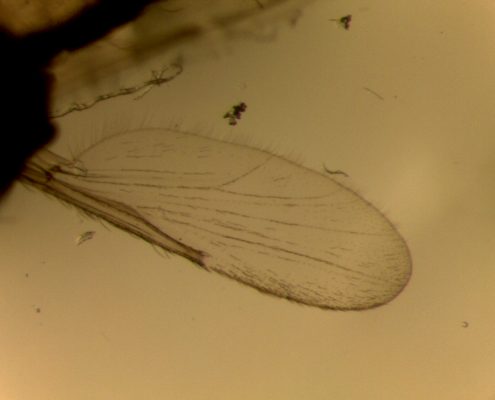COBBS – Non-biting Midge Experiment
Our search for midge swarms has taken us to many of the public parks within Rome including Riserva Naturale Valle dell’Aniene, Villa Paganini, Villa Torlonia, Parco dell’Acquedotto, Villa Ada, Laghetto dell’EUR and Ponte Tazio. Basically any place with an aquatic or semiaquatic habitat (the larval stage requires water for development) is where midges can be found. Our experimental setup is similar to that of the flocking experiment except that our baseline distance shrinks from 25 m down to approximately 5 – 8 m (depending on our distance to the swarm). Lighting to capture the midges is tricky, as we depend on the backscattering of light off their wings to illuminate each individual. This means that the sun is generally in front of the cameras, which effectively reduces the contrast of the midges. To counter this problem, we set up a large black background (10 m x 2.5 m) using several poles and ropes (see images below) and we’ve constructed large conical lens hoods for the cameras using sheets of PVC. Midges are generally active throughout the day, however due to the requirement of backlighting it is only feasible to acquire image sequences at dawn (yes we have gone out at dawn) and at dusk. Another crucial piece of equipment is an anemometer to measure the amplitude of the wind speed.
Midge Taxonomy
As part of our ongoing study of midge swarms, each experimental session we capture and preserve several midges that are part of a swarm. Back in the lab, we use a combination of a stereoscopic and a compound microscope (see Fig. 1) to classify the midges. The taxonomy for midges is quite complicated. They are insects of Order Diptera, Suborder Nematocera, and Infraorder Culicomorpha. Within the parks of Rome, we have typically found two Families of midges: Chironomidae and Ceratopogonidae. The stereo microscope enables us to determine sex of the midge as well as the family. Male midges have very distinct looking antennae: many flagellomeres (segments) with whorls of long setae leading to its plumose appearance, while females have antennae composed of fewer shorter flagellomeres with more sparse setae. To distinguish between the two Families, we examine midge’s flagellomeres . Chironomidae have rod-like flagellomeres while Ceratopogonidae have ball-shaped flagellomeres. The difference between the two types can be seen in a comparison of Figs. 7 & 10. Further classification into Subfamilies, Genus and Species can also be accomplished using the stereo microscope to scrutinize other morphological characteristics of the midge, namely the wings and legs. The primary aspect to examine in the wings is the veins, especially their distribution pattern. The legs of a midge have five segments and the ratio between the lengths of various segments can be a classifier. To truly identify a midge to the Species level requires looking at the “hypopygium” i.e. the male sexual organ in midges. This process involves dissecting the midge to remove the hypopygium and mounting it on a slide to be examined under the compound microscope. Unfortunately, this means that it is not possible to identify precisely female midges.
For further information on midge identification (and the resource we currently use), see: P.H.Langton and L.C.V.Pinder, Key to the adult male chironomidae of Britain and Ireland, Volumes 1 and 2, Freshwater Biology Association, 2007.

Chironomidae
This is a Family of nematoceran flies that can be found around the world. Known informally as chironomids or non-biting midges, they are also closely related to Ceratopogonidae. As can be seen the figures below, Chironomidae resemble mosquitoes and are frequently misidentified as the latter. The difference between the two is that former lacks the wing scales and mouthparts of the latter. The following figures show a sample of the different specimens that we have collected throughout Rome.
Figs. 2 – 5 are Subfamily: Orthocladiinae, Genus: Cricotopus, Species: Sylvestris

Figs. 6 and 7 show close ups of the hypopigium of two different midges. Fig. 6 is the same Species as Figs. 2 – 5 i.e. Cricotopus Sylvestris, while Fig. 7 is Nanocladius Rectinervis.
Figs. 8 and 9 show another species of midge that is common in Rome: Chaetocladius Piger.
Ceratopogonidae
Although technically a Family of biting midges, the only species that we have found so far is from the Genus Dasyhelea, which is known to feed on nectar.


